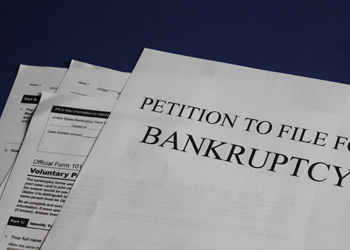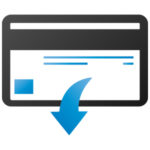 By Todd Christensen | June 7, 2022
By Todd Christensen | June 7, 2022
Accredited Financial Counselor®, AFPCE
When you’ve got more debt than you can keep up with, and you’re having a hard time making your monthly payments, a debt relief program can help. But not all are right for everyone.
Here are options to explore.
The ultimate goal of a debt relief program is to help you become debt-free within a reasonable amount of time. The best program to achieve this depends entirely on the circumstances of your debt, including how much you owe, interest rates on your debt, and your credit score.
In this article we cover the six (7) main types of debt relief options available today. We go over the details of each and explain the pros and cons so that you can make a more informed decision regarding your specific situation.
7 Types of Debt Relief (click to jump to section)
1. Self-Help Debt Relief
2. Debt Consolidation
3. Less Than Full Balance
4. Debt Settlement
5. Debt Forgiveness
6. Government Debt Relief Programs
7. Bankruptcy
Sometimes overwhelming debt happens in an instant with sudden medical bills, unexpected job loss, or natural disasters. Sometimes it’s a product of months of unsustainable spending. Regardless of how it happened, if you are struggling to make a dent in your debt, it could be time to start exploring your options.
Although a debt relief program can help in situations of extreme debt, not all debt relief is the same. Each program works towards the same goal of debt-free living in very different ways. It’s important to understand how each program works and to know the pros and cons before committing to a debt relief program.
HOW DO DEBT RELIEF PROGRAMS WORK?
The term “debt relief program” refers to solutions designed to make your monthly payments more manageable. Debt relief programs typically focus on debt that isn’t backed by collateral, otherwise known as unsecured debt.
Unsecured Debt
- Credit card debt
- Medical bills
- Personal loans
- Student loans*
Secured Debt
- Home equity lines of credit (HELOC)
- Home equity loans
- Mortgages
- Auto loans
*Although student loans are considered unsecured debt, they aren’t treated the same as other unsecured debt in cases of nonpayment. Some debt relief programs will not help with student loan debt. Prior to starting any debt relief program, find out exactly what types of debt qualify.
The ultimate goal of a debt relief program is to help you become debt-free within a reasonable amount of time. The best program to achieve this depends entirely on the circumstances of your debt, including how much you owe, interest rates on your debt, and your credit score.
WHEN SHOULD YOU SEEK DEBT RELIEF?
Debt relief can be helpful for anyone having a hard time paying their debt. However, some debt relief options should be used only as a last resort.
If you think you can repay your unsecured debts on your own within five years, employing self-help practices such as budgeting, credit counseling, and speaking to your creditors on your own can be a good start.
If you wouldn’t be able to pay off your debts within five years, even with extreme budgeting, or the total of your unpaid unsecured debt is more than half of your gross income, a more intensive program such as debt management plan, debt settlement, or bankruptcy might be the best option.
THE 7 TYPES OF DEBT RELIEF
1. Self-Help Debt Relief
Budgeting

- Write down all of your income from every source.
- List every recurring expense that doesn’t change from month to month (rent, car payments, insurance premiums).
- List each expense that changes each month (grocery bills, entertainment expenses).
- Total up each column
It’s important to include every expense, no matter how small it may seem. You won’t know where you can cut back unless you know precisely where your money is going each month.
Once you have your income and expenses listed, look for areas where you may be overspending. For example, your morning coffee may only cost $2.70 per day, but over a month you have spent around $80. A bag of coffee from the store will cost around $17 and could last you more than a month. If you’re able to save $80 per month and put it towards your debt, you can reduce your debt by an extra $960 per year.
This is just an example of how small expenses add up over time. Sometimes, small lifestyle changes can make a dramatic difference.
Credit Counseling
Credit counseling involves sitting down with a professional to review your finances. A credit counselor can help you create or adjust your budget, give you money management information, and provide free tools and education to steer you towards financial success. After thoroughly evaluating your finances, a credit counselor may recommend a debt relief program that best fits your goals.
Credit counseling can help you develop a financial plan and teach you how to remain debt free after you have finished your program.
Credit counseling is typically offered for free by nonprofit organizations (we offer free credit counseling), but you should always verify fees prior to signing up with any program.
NOTE: Credit counseling is not the same as credit repair. Credit repair clinics have a high tendency to be scams. No credit repair organization can remove accurate negative information from your report. They can only remove inaccurate information, something you can do yourself for free.
Direct Negotiation with Your Creditors
Another self-help method is to negotiate with your creditors. Some creditors may be willing to set up a modified payment plan if you reach out and explain your situation.
Try to be proactive when you find yourself falling behind on payments. If you wait until your debt has been sent to collections, you may have a more difficult time negotiating a new payment plan.
Common Mistakes with Self-Help Debt Relief
Making the wrong decision when tackling debt on your own can make a bad situation much worse. Following these tips can help you avoid the common mistakes that people make when trying to resolve their debt.
- Always pay secured debt (like a mortgage) on time. Do not make a secured debt payment late to pay off unsecured debt. Because secured debt is backed by collateral, you can lose that collateral, such as your car or house, putting yourself in a worse position.
- Don’t borrow against the equity in your home to pay unsecured debt. This puts your home at risk of foreclosure, and changes unsecured debt into secured debt that cannot be cleared by bankruptcy.
- Don’t withdraw retirement funds to pay unsecured debt. If you pull from workplace retirement funds and lose your job, this can trigger taxes for whatever amount you withdrew.
- Don’t trust advice from collection agencies. The pressure presented by debt collectors can be intense, but taking their advice can make you do something that isn’t in your best interest.
If self-help methods aren’t working, a debt relief program offered through a debt relief company may be the best solution for you.
2. Debt Consolidation
Debt consolidation is an extremely broad term. If you contact several debt relief companies to request debt consolidation, you’ll probably receive several very different debt consolidation solutions. However, each type of debt consolidation has its own unique benefits and risks.
Debt consolidation is the process of combining separate debt payments into one. You might also see it called credit consolidation when you’re looking to consolidate only credit card debt. If done correctly, debt consolidation should combine your debt into one manageable payment, possibly with a lower interest rate than you currently have for each of your separate debts.
There are two main benefits to debt consolidation. First, your various debts are now all in one place, paid at one time. A simplified and more organized approach to debt repayment can protect you from accidental non-payment or having to pick and choose which debt you can afford to pay.
Second, you may be able to negotiate a lower interest rate than you currently have, saving you money in the long run.
If you are having trouble keeping up with your minimum payments each month, some form of debt consolidation could be a helpful option for you. However, given the contradictory language used for debt consolidation, you must research each program to choose the right one for you.
There are 3 main ways that you can go about consolidating your debt for the purposes of debt relief:
1. Balance-Transfer Credit Card
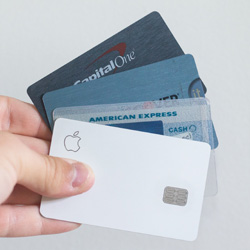
With this method, you find a line of credit with an annual percentage rate (APR) of 0% for a set amount of time. You transfer your credit card debt onto the new card and attempt to pay off the debt before the promotional period ends and the interest rate raises. If you can pay off the debt before the interest rate increases, you can avoid large interest payments on multiple separate credit card bills.
Not everyone with credit card debt will qualify for a balance-transfer card. Most credit card companies require good or excellent credit (690 or higher) to qualify. You will likely only qualify for this method if your missed payments have not yet impacted your credit.
It is important to pay off most, if not all, of this card before the higher interest rate is applied to the remaining balance. If you don’t feel that this is possible, this debt relief method is not the right one for you. You could end up paying more interest on a higher balance, costing you more money than you originally owed.
If you choose to apply for a balance-transfer card, always know what the range of the APR will be when the promotional period ends, and read all the terms and conditions so you are not surprised by fees.
2. Debt Consolidation Loan
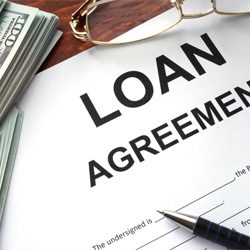
The qualifications for a consolidation loan depend on the lender, and requirements will vary. Typically, you can qualify for a new loan with bad or fair credit (689 or below), but better credit scores will get more favorable interest rates and loan terms.
To see if a debt consolidation loan will help you, confirm that your interest rate for the total consolidated debt will be less than the interest rates for each of your individual debts. If the interest rate isn’t lower than what you’re paying now, this isn’t the best option for you.
Beware of loans that lower your monthly payment by extending the amount of time you have to repay the loan. Although this might make your monthly payments more affordable, you will ultimately pay more in interest.
As with any debt relief program, it’s important to be aware of the various fees and tax implications. With debt consolidation loans, you will be faced with origination fees that must be paid upfront. Depending on the lender, these fees can be anywhere from 1%-8% of the total loan amount.
3. Debt Management Plans
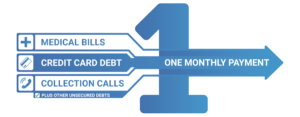
A DMP is offered through non-profit organizations. Usually, you meet with a credit counselor to review your finances, develop a budget, and determine what you can afford to pay towards your debt each month. The organization negotiates with your individual creditors on your behalf to create a repayment plan that works for you. Your credit counselor will attempt to get creditors to lower your interest rates or waive fees, but it is not guaranteed.
Once a plan is created and agreed upon by your creditors, you deposit money each month with the debt relief company, which distributes it to your creditors. Debt management plans often come with financial education and access to a credit counselor who can answer any questions you have along the way and offer resources.
Although it depends on the individual and circumstances of the debt, DMPs aim to have your debt paid off within 3-5 years.
Because a debt management plan is not a loan, your credit score doesn’t matter when applying. If your struggle with debt has harmed your credit score, this could be a good debt relief program for you.
As with all debt relief programs, it’s important to be aware of fees. DMPs include a one-time setup fee that varies by state, as well as monthly service fees. In some cases, the savings on interest make up for the fees, but it is important to know exactly what you’re paying to the debt relief company. If you apply for a debt management plan, ask your credit counselor to detail your proposed savings versus the costs of the program.
Most DMPs require you to cancel all of your credit cards other than one emergency card. You most likely will not be allowed to open new lines of credit. Before applying, ask what the terms of the debt management plan will be regarding credit, and what happens if those terms are broken.
Debt management plans can be noted on your credit report, but they themselves do not impact your credit score. However, closing credit card accounts can ding your score. The small cost of closing the accounts should be balanced by consistently paying off your debt, but you will need to complete the DMP to fully see the reward.
A debt management plan requires dedication. Many people do not make consistent payments and end up not completing the program. For this debt relief program to help you, you must make your specified payment on time, in full, every single month. If you fail to make a payment, your creditors can rescind any concessions they have made.
Another risk of not following the plan is that the debt relief company could choose to remove you from their program. If this happens, you lose whatever fees you have paid, and your credit score may suffer from the nonpayment of your debts.
Should you decide that a DMP is a good option for you, pick an agency that is accredited by the National Foundation for Credit Counseling or the Financial Counseling Association of America.
3. Less Than Full Balance
How it works: Credit counseling agencies can play a role in facilitating less than full balance arrangements between clients and creditors. These agencies are nonprofit organizations that offer financial counseling and debt management services to individuals facing financial difficulties.
Why choose a Less than full balance by a non-for-profit agency versus a debt settlement agency?
Choosing a Less than Full Balance (LTFB) program offered by a non-profit agency can have certain advantages over opting for a debt settlement agency. Here are some reasons to consider:
- Creditor agreement: LTFB programs through non-profit agencies often have pre-negotiated agreements with creditors. This means that creditors are more likely to agree upfront to accept a partial payment as settlement, making the process smoother and more predictable.
- Creditor communication: Non-profit agencies in LTFB programs typically maintain regular communication with creditors throughout the payment process. This ensures that payments are distributed to creditors promptly and helps to build a positive relationship with them.
- Reduced risk of collection actions: By enrolling in an LTFB program, you actively work towards paying off your debts, reducing the risk of collection actions. As payments are made to creditors, it helps demonstrate your commitment to resolving the debt, potentially avoiding legal actions or aggressive debt collection tactics.
- Positive credit report impact: LTFB programs, when successfully completed, can have a more favorable impact on your credit report compared to debt settlement. While the process is underway, the status may be reported as “settled,” but once the program is completed, it is typically updated to “satisfied.” This demonstrates your commitment to fulfilling your financial obligations.
Non-profit assistance: Choosing a non-profit agency for an LTFB program means you are working with an organization that is focused on helping individuals improve their financial well-being. Non-profit agencies often provide additional resources, such as financial education and budgeting assistance, to support you in your journey toward financial stability.
4. Debt Settlement

Debt settlement does not combine your individual payments into a single monthly payment. Instead, a debt settlement company negotiates with your creditors on your behalf to try to settle your debts for less than what you owe.
While this can sound like a dream come true, it is an extremely risky debt relief program. Before entering into a debt settlement program, weigh the benefits against the potential consequences.
The benefit of debt settlement is that you could end up paying less than what you owe. If your creditors are willing to negotiate quickly and you have a lump sum saved up to make the settled payments now, this can be a fast way to get out of debt.
The risk of debt settlement is that, although some debt settlement companies speak in absolutes that they will settle your debts for less, there is zero guarantee that your creditors will agree to settle. The reality is that negotiations can take anywhere from months to years depending on how willing your creditors are to reach a new agreement.
Most debt settlement companies will advise you to stop making your payments while they negotiate and put your payments into a separate account instead. If you do this, your debts will continue to accrue interest and late fees while damaging your credit score. In the meantime, collections calls will increase, and you are at risk of your creditors taking legal action. If a debt settlement company advises you do stop paying your debts, we strongly recommend against doing business with them.
We will always suggest exploring every other option first. The Federal Trade Commission (FTC) and the Consumer Financial Protection Bureau also strongly caution against debt settlement programs.
If you find that debt settlement is your only option, avoid companies that do the following:
- Charge fees prior to successfully settling your debts (this is expressly prohibited under the FTC’s advanced fees ban)
- Guarantee that they can settle all of your debts
- Claim to have a new government program for credit card debt (this is a scam)
- Don’t communicate the consequences of stopping payment to your creditors
- Claim that they will stop all collections calls and lawsuits
If you choose debt settlement as your method of debt relief, be aware of the tax implications. Forgiven debts are counted as taxable income by the IRS.
5. Debt Forgiveness
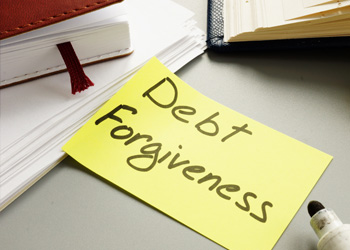
In some cases, creditors have programs specifically for people experiencing financial difficulty. If you’re looking for debt forgiveness, consider reaching out to your creditors to see what kinds of programs they offer, and the qualifications you must meet to apply. Unfortunately, debt forgiveness isn’t an easy process and there is no guarantee that your creditors will forgive your debt.
Medical Debt Forgiveness
In cases where medical debt is overwhelming and unpayable, you can reach out directly to the hospital and ask about their financial assistance policy. In some cases, this will be a modified payment plan. In others, they may choose to forgive part of the debt. Income is usually the primary deciding factor.
If you are struggling with your medical debt, reach out to the hospital sooner rather than later, as it will be much easier to negotiate directly with the hospital than with collections. Be prepared to provide financial statements.
We may also be able to offer assistance for certain types of medical debt. Learn more about our free medical debt counseling services here.
Mortgage Debt Forgiveness
Mortgage debt forgiveness is practically unheard of because your house is collateral for the loan. If you’re struggling to pay your mortgage, you may be able to work out a modified payment plan from your lender. Should you pursue this option, it is critical to understand all of the terms of the modification. If your payments are lowered by extending the length of the loan, you will end up paying more on interest in the long run.
6. Government Debt Relief Programs
There are a few government programs designed to assist with repaying debt. They are mostly targeted toward student loans and tax debt.
Student Loans
For federal student loans, you can apply for debt forgiveness, cancellation, or discharge through certain government programs. The programs available to you are highly circumstantial. We can’t cover them all here, but here are a few examples.
If you have worked full-time for the government or a non-profit organization, you could qualify for the Public Service Loan Forgiveness Program (PSLF).
If you have been a full-time teacher for five years in a low-income school, you could qualify to have up to $17,500 forgiven from your federal student loan.
If your school closed while you were enrolled, or shortly after you left, you could be eligible for a closed school discharge.
If you are totally and permanently disabled, you could qualify for a discharge of your federal student loans.
If you don’t currently meet the qualifications for student loan forgiveness, there are income-based repayment plans that can make your monthly payment more manageable. If you keep up with payments according to the plan, you could qualify for forgiveness after a certain amount of time.
Unfortunately, it’s common for scams to specifically target those looking for relief from student loan debt. Always research any company you consider using to apply for student loan forgiveness.
Find more information on student loan forgiveness here.
Unpaid Taxes Debt Relief
The IRS Fresh Start Program offers something similar to debt forgiveness. You can apply for an offer in compromise, but the requirements are very difficult to meet. The IRS assesses your finances to determine if paying the overdue taxes will have a severe impact on your quality of life. Depending on what they find, they could agree to settle for less than what you owe. If they feel that you should be able to pay the taxes owed, you will not qualify for their forgiveness program.
The IRS Fresh Start Program also offers a payment plan. Installment agreements essentially break the lump sum owed into manageable monthly payments. There are multiple different options for installment agreements, and the requirements vary.
Active-Duty Military Debt Relief
If you are active-duty military, you could receive assistance through the Servicemembers Civil Relief Act (SCRA). This act could qualify active-duty servicemembers for reduced interest rates on mortgages and credit cards, as well as provide some protections against eviction. The SCRA can slow down the process of bankruptcy and foreclosure, giving you a little more time to get back on your feet. To see if you qualify for aid through the SCRA, contact your local Armed Forces Legal Assistance office.
Government Credit Card Debt Relief Programs
Currently, there are no government programs that assist with credit card debt. If you are looking for help with credit card debt, you will need to seek out a private organization.
7. Bankruptcy
If you cannot pay off your debts within five years, it could be time to explore bankruptcy. Because of the impact on your credit score, bankruptcy should only be considered after all other avenues are evaluated.
Bankruptcy is initiated through federal court proceedings. It is a legal process through which your assets are liquidated to pay your creditors, or a payment plan is created. After this is complete, some or all of your debt is “wiped clean.”
Not all debt is cleared by bankruptcy. You will most likely still be obligated to pay any bills owed to—or through—the government. This includes student loans, child support, and taxes. A judge may also determine that credit card debt accumulated out of sheer irresponsibility will still need to be paid through a payment plan or settlement.
There are two main chapters of bankruptcy filed by an individual with insurmountable debt.
Chapter 7 Bankruptcy
- Assets are liquidated to pay creditors
- Can result in the loss of property
- No payment plans are created under this form of bankruptcy
Chapter 13 Bankruptcy
- Also called a wage earner’s plan
- Develops a plan through the court to repay creditors within 3-5 years
- For the duration of the repayment plan, collectors may not contact you
Bankruptcy is the most negative mark you can have on a credit report, and it remains there for 7-10 years. The cost of retaining an attorney skilled in bankruptcy filings can amount to $1,500 or more, depending on the complexity of your case.
While a bankruptcy shows on your credit report, you will have a harder time getting lines of credit, including mortgages and auto loans. In some cases, a bankruptcy can impact your ability to rent immediately following the filing. Over time, the impact will lessen if you manage your finances well and show a good credit history following bankruptcy.
FINDING THE RIGHT DEBT RELIEF OPTION FOR YOU
Although a debt relief program can seem like a simple solution to resolve your debt, some options can leave you worse off than when you started. It’s an unfortunate truth that the debt relief industry attracts scammers and programs that threaten your financial health, taking your money and damaging your credit score. Not fully understanding the terms of a program, even one offered by a reputable debt relief company, can hurt you in the long run with unexpected fees and long timelines.
Prior to signing anything with a debt relief company, verify the following:
- How long has the company been in business?
- What do you need to qualify for the program?
- What are the fees you are required to pay, and when?
- How long will the program last?
- Which creditors will be paid, and how much?
- For debt in collections, are the correct agencies going to be paid?
- How much are you going to save by using their service?
- What are the tax implications of the program?
- How will the program affect your credit now, and going forward?
- How often are their programs successful?
- What do other customers have to say about the program?
You will see pages of lists online boasting the best debt relief program, and the best debt relief company. The reality is that you must pick a program and organization that works best for your own financial situation. Some programs that work well for one person may not be right for another.
In the end, the best debt relief company will be transparent about their programs, answer all your questions, and provide free information about their services. If the claims of a debt relief program seem like a magic, low effort solution – it’s probably too good to be true. Entering any program with as much information as possible can protect you from risking your financial health.
Learn More About Our Debt Relief Program
Consolidate your debt into one simple monthly payment without a loan, and gain financial stability with our Debt Relief Program.
-
Reduce your monthly payments up to 50%
-
Reduce interest rates up to 75%
-
Learn about your debt relief options
-
Pay your debt off sooner
-
Stop late and over-limit fees
-
Stop the collections calls
Get a FREE Debt Relief Consultation
There is ZERO cost or obligation to you, and may improve your credit score over the duration of the program.
By clicking “Submit” I consent to receive calls, emails, and text message offers/information from Debt Reduction Services, Inc. using an autodialer/pre-recorded message at the number I provided. I understand that msg/data rates may apply and that my consent to such communications is not a requirement for purchase.
How it Works
Step 1.
Talk to one of our certified debt relief counselors.
Step 2.
Our preset terms with creditors can get you lower interest rates and payments.
Step 3.
Make just one simple monthly payment to us and we’ll distribute it to your creditors for you.


